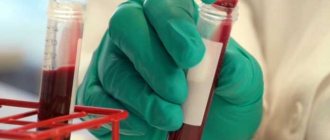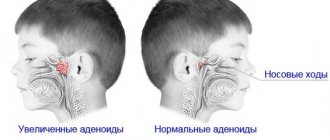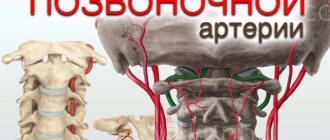135 years ago, on March 24, 1882, thanks to Robert Koch, humanity learned how tuberculosis is transmitted from person to person and what its pathogen looks like. For a long time it was believed that this is a disease of a disadvantaged population, and people who live in unsanitary conditions and do not follow the rules of personal hygiene can become infected. Today, alas, all social strata are at risk of infection. To reduce the risk of tuberculosis, it is extremely important to know how the pathogen is transmitted.
Features of the causative agent of tuberculosis
The discovery made by Koch was so long-awaited that the German microbiologist was awarded the Nobel Prize in 1905. Koch's postulates, derived from his studies of tuberculosis, are still fundamental for every microbiologist. Thanks to this scientist, the world literally saw the enemy in the face and got the opportunity to learn to resist the most terrible disease. The enemy was named after the discoverer - Koch's wand. Over the long years of war with humanity, this elongated mycobacterium with a size of 1 to 10 microns has perfectly learned to survive in any environment. It is resistant to alcohol, acids, and many antibiotics, and can adapt to drugs that kill it, mutating over time and developing immunity. Symptoms of its presence in the body are not always obvious.
The pathogen can live in a warm, humid environment (up to 7 years), in street dust (up to a year), in water (up to 5-6 months), in soil (up to six months) and even in books. Many people do not even suspect that raw milk, butter, and cheese can become a nutrient medium for Koch's bacillus. The fight against bacteria is complicated by the fact that its death, in addition to potent antibacterial drugs, can be caused by very limited factors.
Open form diagnostics
This disease is diagnosed based on the results of laboratory tests and depending on the form. The correct diagnosis is determined only when mycobacteria are detected in the test material by smear and culture. In patients with suspected open form of tuberculosis, the main material for research is sputum. An additional bronchoscopy is also performed.
The disease affects various organs and therefore almost any biological material can be taken for research, with the exception of feces. Since this material includes many other bacteria, which prevents reliable diagnosis.
In recent years, genetic methods based on the detection of mycobacterial genetic material in samples have been used to diagnose the open form. This study, unlike traditional methods, does not last long, and the result can be obtained within 1-2 days.
Routes of infection with tuberculosis
How can you become infected with tuberculosis? There are many options. Often, a sick person who monitors his health, leads a healthy lifestyle and does not have bad habits, is sincerely perplexed as to how he could get tuberculosis. Alas, no one is safe from infection. The infection can be transmitted:
- by airborne droplets;
- through contaminated food;
- through non-disinfected dishes;
- from animals (cats, cattle and seals).
The routes of infection with tuberculosis are sometimes impossible to calculate. You can even catch mycobacteria by accidentally inhaling street dust containing Koch's bacillus in windy weather. Doctors believe that on average only 5 out of 100 carriers of Koch's bacillus can develop tuberculosis. Once a mycobacterium enters the body, it may not detect itself for a long time. But as soon as a person experiences stress, hypothermia or a serious illness, symptoms will not take long to appear.
A sick person can “share” the disease with at least ten people in a year. That's why the disease is so terrible. And the urgency of the fight against it does not weaken.
Symptoms of the closed form of tuberculosis
Tuberculosis in its closed form often does not cause pronounced symptoms. However, early signs may include:
- General weakness of the body.
- Irritability.
- Fatigue.
- Malaise.
- Loss of appetite and therefore weight loss.
- Cough (often dry).
- Sometimes unpleasant feelings in the chest area.
The above symptoms are characteristic of many diseases and therefore tuberculosis is most often detected by chance.
What are the symptoms of the disease?
Infection with tuberculosis usually occurs unnoticed. A person may experience general malaise, turn to different specialists and not even suspect the need to see a phthisiatrician. The first signs of illness are easy to miss. Sometimes it begins asymptomatically, especially if the form of tuberculosis is closed, and over time it can become severe. Therefore, doctors call Koch's wand very insidious. The following symptoms should alert you:
- low-grade fever (37-37.5 °C);
- increased fatigue;
- fatigued sleep syndrome, when a person wakes up in the morning already tired;
- persistent dry cough or coughing with sputum;
- previously uncharacteristic sweating, especially at night;
- loss of appetite;
- absent-mindedness, loss of attention;
- chills for no apparent reason;
- weight loss.
Don't panic. Perhaps you are simply developing a banal acute respiratory infection against the background of chronic fatigue. But it's better to be safe. Don’t expect to survive the disease on your feet, because if the disease is really serious, you risk not only starting it, but also putting others at risk of infecting others. Try to understand whether TB is transmitted one way or another before you panic.
Who is most at risk of infection?
The risk group includes children whose immune systems have not yet fully formed, adolescents, the elderly and pregnant women. Groups of people who are in constant contact with each other, for example, prisoners held in unfavorable prison conditions, are susceptible to severe forms of the disease.
Outbreaks of tuberculosis have also been reported in barracks and hospital wards. A kindergarten worker or school teacher with an open uniform can infect children.
Factors that increase the risk of infection include:
- presence of bad habits;
- addiction;
- taking immunosuppressive drugs;
- malnutrition,
- chronic respiratory diseases;
- diabetes.
HIV-infected patients most often die from tuberculosis infection, which occurs against the background of acquired immunodeficiency syndrome. In such cases, the disease is extremely malignant and is characterized by a rapid course and poor prognosis.
Where did tuberculosis come from?
The history of tuberculosis goes back more than 70 thousand years. It has been reliably established that the pathogen Mycobacterium tuberculosis originated in ancient Africa. Then mutated strains of mycobacteria with the migrating progenitors of modern humans spread throughout the world. The transmission routes of tuberculosis have not changed over the centuries. During the Holocene era, which has lasted for the last 12 thousand years, seals and sea lions brought Koch's wand to the American continent. Geneticists have discovered the first signs of the presence of mycobacteria in the fossilized remains of these animals. So the American aborigines became infected with tuberculosis from pinnipeds. And during the times of colonization, they generously shared it with their conquerors. Although by that time Europe had already learned the full severity of the disease. The European strain of tuberculosis can be traced by scientists back to the Neolithic. This is indirectly indicated by ancient human remains. 7 thousand years ago, incurable illness was common, accompanied by deformation of the chest and other parts of the skeleton. Over time, it became known as Marie-Bamberger syndrome. Microbiologists unanimously agree that the cause could only be advanced tuberculosis.
Is tuberculosis inherited?
Scientific facts refute the possibility of hereditary transmission of tuberculosis. Thus, Debre followed the course of 15 years for 1,369 children born to mothers with tuberculosis. Over such a long period, only 12 children fell ill, and some of them had unfavorable material and living conditions. This is valuable evidence that refutes the possibility of hereditary transmission of tuberculosis.
Proof that tuberculosis is not inherited may be the fact that the literature does not describe cases of tuberculosis in a newborn child if the father has tuberculosis. Mycobacteria are not found in the sperm and eggs of patients with tuberculosis.
Understanding the significance of hereditary factors in the disease of tuberculosis is complicated by in-depth study of the variability of the causative agent of tuberculosis. If we take into account the polymorphism of Mycobacterium tuberculosis, among which the formation of filterable and L-forms of mycobacteria deserve special attention, as well as the possibility of their reversion to the initial bacterial ones, then we cannot completely reject the possibility of infection of the fetus with changing Mycobacterium tuberculosis in the event of maternal illness. In addition, the filterable form of the tuberculosis pathogen can remain in a person’s blood for a long time in a latent state. Only if the body's resistance decreases or under the influence of other factors can it turn into a bacterial form and cause disease. This prediction of A. Yurgelionis requires further study, but for now the prevailing doctrine is the pre-disease of tuberculosis due to aerogenic infection.
According to modern concepts, mycobacterium tuberculosis, which enters the body, in most cases is not capable of causing disease, since the body’s defenses react. The disease occurs when the body's resistance is reduced due to adverse environmental influences. The massiveness and virulence of tuberculosis infection plays an important role in this. If a person becomes infected with a small dose of Mycobacterium tuberculosis of weakened virulence, the disease does not develop, but only an immunological restructuring of the body occurs.
Consequently, penetration of Mycobacterium tuberculosis into the body leads to infection of the body, but does not always cause disease.
What organs does Mycobacterium tuberculosis affect?
People become infected with tuberculosis every day. Those who believe that Koch's bacillus affects only the respiratory system - the lungs and bronchi - are deeply mistaken.
The pulmonary variant is just one of the forms of the disease, of which there are quite a few. When suspecting pulmonary tuberculosis, it is easy to guess the route of infection. But the strain of Mycobacterium tuberculosis, transmitted in different ways, is very virulent, and therefore is capable of infecting any organ, finding it quite vulnerable. Is tuberculosis of these forms transmitted from person (animal) to person? Yes. Among the extrapulmonary forms, damage is distinguished:
- meninges;
- nervous system;
- lymphatic system;
- bone tissue and joints;
- organs of vision;
- genitourinary system;
- skin;
- mucous membrane;
- intestines;
- liver;
- heart muscle.
This list is far from complete. The symptoms of each type of tuberculosis are different. But the consequences of lack of timely detection and treatment are equally catastrophic. Sad statistics inexorably testify: it is tuberculosis that leads in mortality among all diseases known to the world, including AIDS. The incidence of tuberculosis in the world among the adult population is estimated at 80-90%.
Consequences and complications
The closed form of tuberculosis will bring consequences if it turns into an open form. These include:
- Impaired functioning of internal organs. This happens when treatment is not timely.
- Joint damage, leading to arthritis, swelling and pain.
- Pulmonary hemorrhage.
- Weakening of the immune system, the body's vulnerability to infections.
- Damage to the heart and disruption of its functioning.
- Calcified formation in the bronchi.
- Tumor formation in the lungs.
- Inflammation in the lungs, etc.
After suffering from an illness, a person will still be susceptible to the negative effects of the disease. A woman can give birth to a child with mental or physical disabilities, possible headaches, inflammation in the gastrointestinal tract, etc. All this occurs due to treatment with potent drugs.
Every person should know what tuberculosis is. This disease carries great danger. To avoid it, you need to take a responsible attitude towards your health and, at the slightest ailment, undergo a medical examination.
How to protect yourself from illness?
It is easy to prevent the disease if you know how you can get infected. Try to avoid contact with people who cough heavily. Of course, they can also suffer from bronchitis. But if symptoms are present, it is better to be safe.
Do not buy products at spontaneous markets. Especially milk in plastic bottles. Tuberculosis is transmitted through dirty dishes. Unscrupulous sellers often use old drink bottles. And they certainly won’t tell you who drank from these bottles or where they got them.
Avoid dusty streets. In the spring, due to poor quality work of city services in windy weather, real dust storms arise on the streets. And dust is the main source of mass infection, and not only with tuberculosis.
Bad habits - alcohol, nicotine, drugs - weaken the immune system and make the body vulnerable, making it easier for Koch’s wand.
Try to watch your diet. Your diet should contain sufficient amounts of animal protein and vitamins. Get fluorography done regularly. If necessary, do not neglect tuberculin diagnostics. The Mantoux test is an immunological test for the body's resistance to Koch's bacillus.
How can you become infected with tuberculosis?
The source of infection is a sick person with an open form of the disease. There are several ways to become infected with tuberculosis.
Contact path
The rarest, implies contact with biological spheres (sputum, blood) through:
- sexual intercourse;
- saliva when kissing;
- household items (clothes, towels);
- Personal hygiene products (toothbrush, cigarettes, razor).
Nutritional route
You can become infected with food from Micobacterium bovis from a sick animal, and an extrapulmonary form develops. So you should not purchase meat and dairy products on the street, in rural areas or from small private entrepreneurs.
Infection can also occur in catering establishments if sanitary standards are not observed.
Airborne path
Most often, mycobacteria are transmitted in this way. The pathogen enters the lungs when bacteria are inhaled with air released when the patient coughs, sneezes, or talks.
Intrauterine path
Transmission of the infection to the fetus is possible from a sick woman with tuberculosis infection of the placenta. With a closed form, the likelihood of infection is low, but for the purpose of prevention, the mother is not recommended to communicate with the newborn for some time.
Determining the diagnosis
In most cases, tuberculosis is detected when a person goes to the clinic with symptoms of general malaise. The doctor asks the patient when the last time fluorography was done, whether he belongs to a risk group, and whether he is registered with a tuberculosis dispensary. The doctor can then refer the patient for tests.
Methods for diagnosing tuberculosis include:
- laboratory tests - sputum analysis for the presence of mycobacteria, blood test;
- X-ray - radiography, fluorography, tomography;
- endoscopic - tracheobronchoscopy, biopsy, pleural puncture.
The Mantoux test detects the disease in children at an early stage.
An infection strain is injected under the skin, and the result is assessed after 72 hours. The mycobacterium should cause an immune response in the form of redness. More than 10 mm is considered a positive result. But this method of identifying sick people has errors, so additional tests are carried out in order to clarify the diagnosis.











